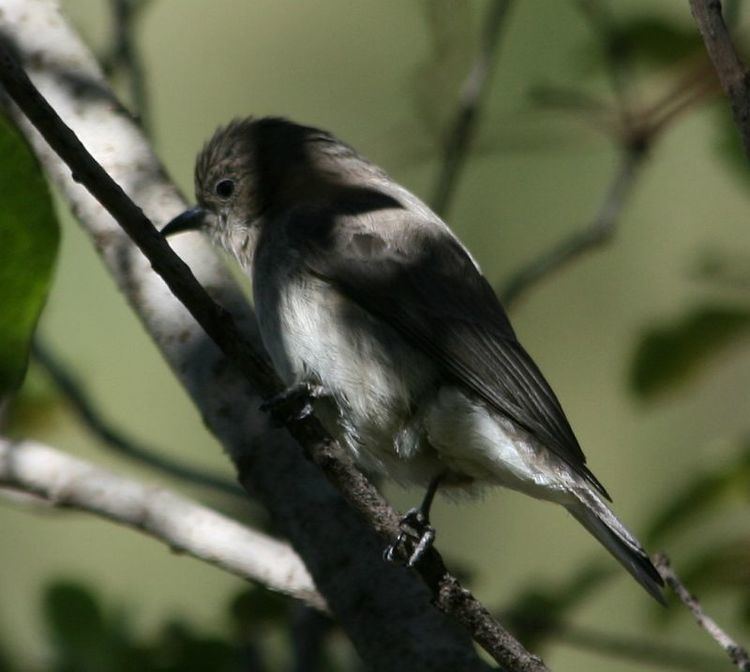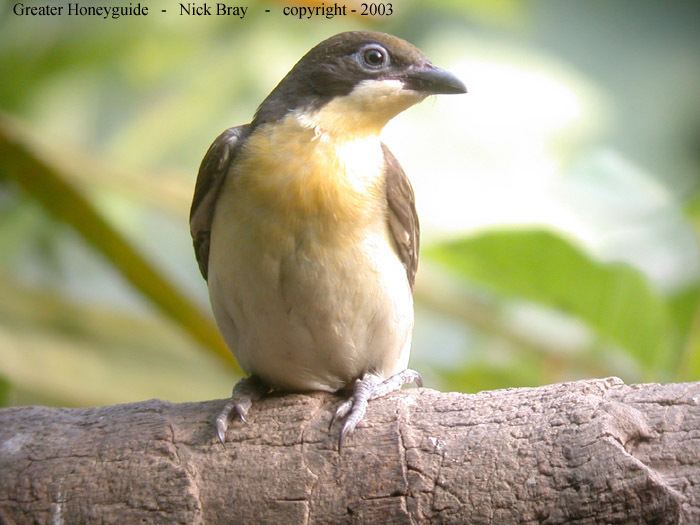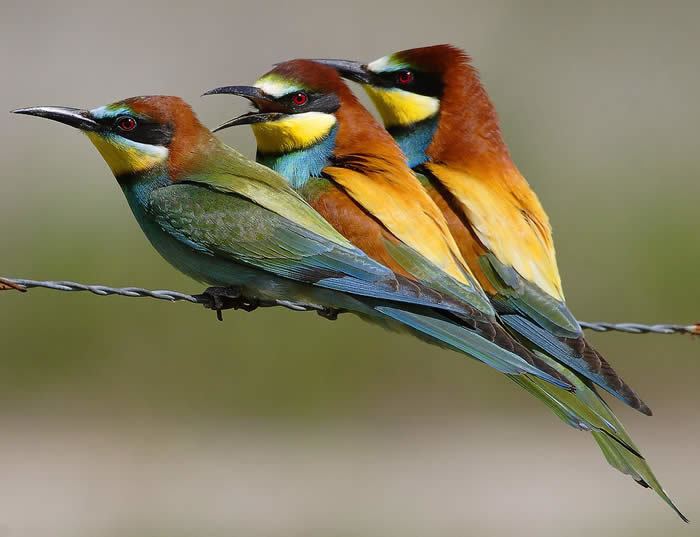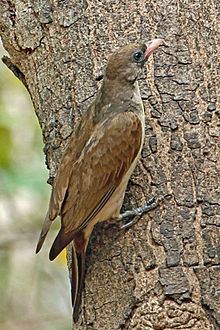Scientific name Indicatoridae Rank Family | Phylum Chordata | |
 | ||
Lower classifications Greater honeyguide, Indicator, Honeybird | ||
How honeyguide birds talk to people
Honeyguides (family Indicatoridae) are near passerine bird species of the order Piciformes. They are also known as indicator birds, or honey birds, although the latter term is also used more narrowly to refer to species of the genus Prodotiscus. They have an Old World tropical distribution, with the greatest number of species in Africa and two in Asia. These birds are best known for their interaction with humans. Honeyguides are noted and named for one or two species that will deliberately lead humans (but, contrary to popular claims, not honey badgers) directly to bee colonies, so that they can feast on the grubs and beeswax that are left behind.
Contents
- How honeyguide birds talk to people
- The hadza last of the first honeyguide bird
- Description
- Guiding
- Breeding
- Species
- References

The hadza last of the first honeyguide bird
Description

Most honeyguides are dull-colored, though some have bright yellow coloring in the plumage. All have light outer tail feathers, which are white in all the African species.

They are among the few birds that feed regularly on wax—beeswax in most species, and presumably the waxy secretions of scale insects in the genus Prodotiscus and to a lesser extent in Melignomon and the smaller species of Indicator. They also feed on waxworms which are the larvae of the waxmoth Galleria mellonella, on bee colonies, and on flying and crawling insects, spiders, and occasional fruits. Many species join mixed-species feeding flocks.
Guiding

Honeyguides are named for a remarkable habit seen in one or two species: guiding humans to bee colonies. Once the hive is open and the honey is taken, the bird feeds on the remaining larvae and wax. This behavior is well studied in the greater honeyguide; some authorities (following Friedmann, 1955) state that it also occurs in the scaly-throated honeyguide, while others disagree (Short and Horne, 2002). Wild honeyguides have demonstrated the capability to understand a human call to accompany them to locate honey. Despite popular belief, there is no evidence that honeyguides guide the honey badger, though there are videos about this.

Although most members of the family are not known to recruit "followers" in their quest for wax, they are also referred to as "honeyguides" by linguistic extrapolation.
Breeding
The breeding behavior of eight species in Indicator and Prodotiscus is known. They are all brood parasites that lay one egg in a nest of another species, laying eggs in series of about five during a period of five to seven days. Most favor hole-nesting species, often the related barbets and woodpeckers, but Prodotiscus parasitizes cup-nesters such as white-eyes and warblers. Honeyguide nestlings have been known to physically eject their hosts' chicks from the nests and they have hooks on their beaks that are needle sharp with which they puncture the hosts' eggs or kill the nestlings.
African honeyguide birds are known to lay their eggs in underground nests of other bee-eating bird species. The honeyguide chicks kill the hatchlings of the host using their needle-sharp beaks just after hatching, much as cuckoo hatchlings do. The honeyguide mother ensures her chick hatches first by internally incubating the egg for an extra day before laying it, so that it has a head start in development compared to the hosts' offspring.
Species
The Indicatoridae contains seventeen species in four genera:
FAMILY: INDICATORIDAE
